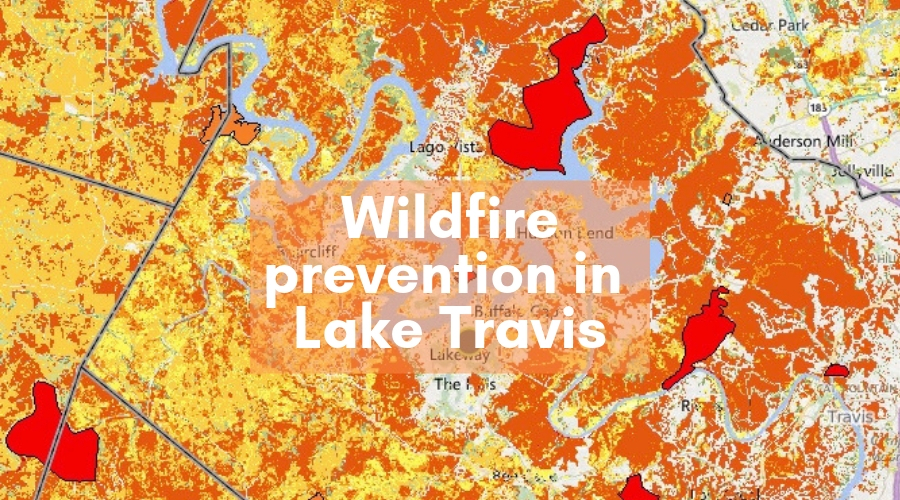Smokey Bear nailed it back in 1947 with “Remember…Only YOU Can Prevent Forest Fires.” And again in 2001, when his slogan changed to “Only YOU Can Prevent Wildfires.” The reality is, out here in the Lake Travis area, it is up to us to prevent wildfires.
You’ve seen the horrifying footage of the California fires – surreal and beyond devastating. The thought of fires like that sweeping through our slice of the Texas Hill Country is just too scary.
For many of the lake and Hill Country communities, there’s one way in and one way out. As we discovered during the fires in Steiner Ranch in September 2011, being vulnerable is terrifying. Evacuation plans are critical for everyone’s safety.
As a result, initiatives have been implemented locally, and more are in the works. Here’s a look at what you need to know and more importantly, what you can do about it.
Evacuation plan debate
Safety in the event of wildfires is paramount, but creating those measures is no easy feat. This is what’s currently happening in Steiner Ranch. After the fires in 2011, everyone realized evacuation plans were needed.
The Travis County’s Steiner Ranch Area Evacuation Route Design team proposed 12 alternate evacuation routes. The purpose of this design was to show all of the potential routes that could connect surrounding neighborhoods to 620, so there would be more ways for residents to get out and first responders to get in.
In late December, Steiner Ranch residents were caught off guard when of the twelve proposed routes, one re-emerged from the initial plan as optimal – “Route F.” It cuts right through Steiner Ranch, like a straight line from 620 to Flat Top Ranch Road.
For some residents in Steiner Ranch, this isn’t the best plan, so they created a petition to state their objections. As of last month, two other routes are still on the table in addition to Route F. You can see the renderings here.
See for yourself with TxWRAP
If you’d like to see just how dangerous wildfires are to your community, you can check out the Texas Wildfire Risk Assessment Portal (TxWRAP) online.
Texas A&M Forest Service developed this tool as part of a statewide effort to increase wildfire awareness and identify the most significant risks. It can be used by everyone – individuals, community groups, government organizations, hazard mitigation planners, and woodland fire managers. It’s not just useful for improving emergency response, but it also helps determine funding and hazardous fuel treatment programs.
What you can do now
Lakeway launched Be Wildfire Ready! to educate the community and bring neighbors together to make a difference.
What do you do in an ember attack?
How do you protect your home?
Will your landscaping make a fire better or worse?
You can get answers to all of these questions and more, so if a fire did break out, you would know what to do.
If you’d like to lend a hand, the Lakeway Wildfire Committee, Lakeway Parks and Recreation Department, and Lake Travis Fire Rescue are joining forces again for the Spring 2019 Wildfire Ready Workday on Saturday, April 6 from 8:30am to noon. Volunteers are needed to pick up and move cut cedar branches to a road where a chipper can access it.
The work area is deep in Hamilton Greenbelt where volunteer chainsaw workers have cut a shaded fuel break behind homes on Palos Verdes. Dead cedar trees have been cut down and live trees limbed up to create a more open forest with less fuel to feed a wildfire. The brush is on the ground and ready for pickup.
What preventative measures have you taken to prevent wildfires? What advice do you have for other Lake Travis area residents? Let us know in the comments section of our Facebook page.
